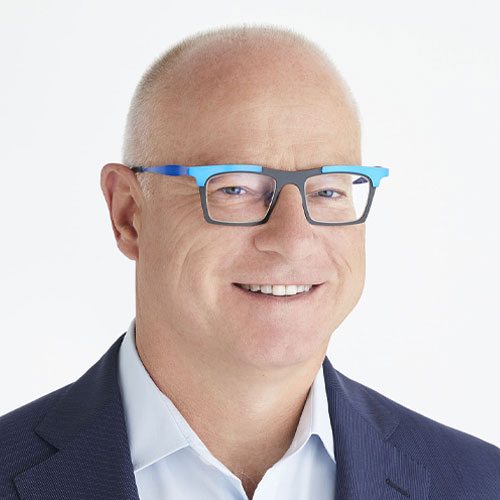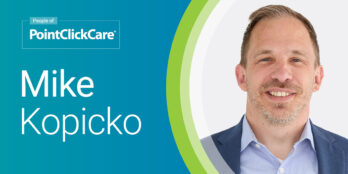
Fulfilling the ‘Quadruple Aim’ of Healthcare Through Proper Investment, Implementation & Education
 5 min
5 min
Better Clinical Outcomes, Innovation
Healthcare is complex and constantly shifting. As such, the need for health information exchange is a care imperative. Not only can it benefit those delivering front-line care, but it can also help providers innovate the way they run their practice.
In long-term and post-acute care, the IT infrastructure to make information exchange possible has lacked critical investment that would otherwise enable providers to improve care through interoperable technology, proper technology integration and staff training. Equitable funding on all three fronts would allow LTPAC facilities to streamline operations and keep care at the bedside, where it belongs.
Achieving the quadruple aim of reducing costs, improving population health, enhancing the patient experience and boosting staff well-being requires the proper investment in – and implementation and education of – health IT tools.
Step One: Investment
Investment in health IT for LTPAC must rise to meet other healthcare sectors. Recent data recorded between 2019-2021 found that 79% of acute long-term care facilities had adopted certified electronic health record technology versus 86% of general acute care facilities.
Notably, senior care facilities were not included among the group of healthcare providers eligible to participate in the Medicare and Medicaid Electronic Health Record Incentive Program (now known as the Medicare Promoting Interoperability Program), which was formed to encourage eligible providers to adopt, implement, upgrade and demonstrate meaningful use of certified electronic health record technology. As a result, LTPAC organizations have not received the same financial support for health IT adoption as other sectors across the healthcare continuum.
Technology has had a positive impact on care delivery, as well as patient safety, experience and outcomes. Why then, would a population with greater care complexity and chronic conditions get left behind? There is an urgent need to expand health information technology incentive programs like Meaningful Use to include LTPAC, giving the sector the same capabilities – and the opportunity to reap the same benefits – as other healthcare segments.
Step Two: Implementation
Once senior care facilities receive equitable funding and have made the necessary investments, seamless implementation and integration into existing systems is critical.
Effective integration of health IT into care delivery improves the timeliness and security of data sharing and, subsequently, leads to better outcomes and more efficient care for patients, improving overall population health. To ensure proper implementation, care teams must take a slow and steady approach and fully understand the focus, goals and infrastructure impact of each stage.
Once a basic information system is in place for billing, reimbursements and census to help manage and reduce costs, care teams should expand to an electronic health record (EHR) that broadens admin functions, incorporates clinical documentation and provides greater access to clinical and financial records. From there, providers can capture real-time data at the point of care and focus on management of the data to increase oversight and insight, while improving analytics that can help determine the status of patients. The final stages of implementation include synching ancillary systems, establishing remote access of data and connecting to the greater healthcare ecosystem for a complete health information exchange.
Step Three: Education
Education and training play a massive role in the successful implementation and use of health IT investments. Without it, providers are likely to have a less-than-positive experience with the technology, and may not realize gains in efficiency or see improvements in the quality of care. Therefore, education and training is key to boosting staff productivity and well-being.
In addition to initial, in-depth trainings, follow-up support and ongoing trainings can ensure staff use the IT appropriately and to the full range of its capabilities. According to the ONC, specific EHR training strategies include:
- Super-user training: “Super users” are staff members who are fully trained and can share helpful tips and techniques, as well as provide formal training sessions to office staff and clinicians.
- Role-based training: This type of training tailors sessions to the roles and responsibilities of staff, focusing on how each group (clinical providers, office staff, IT support staff, etc.) will use the system.
- Process-based training: Process-based training helps staff understand new, specific workflows. For example, process-based training can be used to train users on how to provide clinical summaries for patients.
Proper training leads to proper use, which allows organizations to maximize the value out of their technology investments.
Senior Care Needs (and Deserves) Meaningful Use-Type Incentives
Fulfilling the quadruple aim of healthcare through investment, implementation and education stands to benefit all care providers, but would be particularly powerful in senior care. Patient populations with more complex care needs have the most to gain from the improved care delivery and outcomes provided by interoperable technology.
What’s more, the tools would bring added benefits to a workforce that continues to face staffing challenges and recover from extreme pandemic-driven burnout. We can do our part to make these caregivers’ jobs easier by easing administrative burden and empowering them to do what they love: improving the health of their patients.
Learn More about Health IT Investments in Senior Care
October 27, 2022






